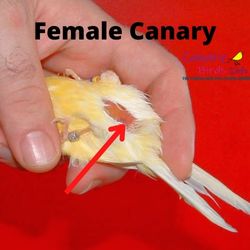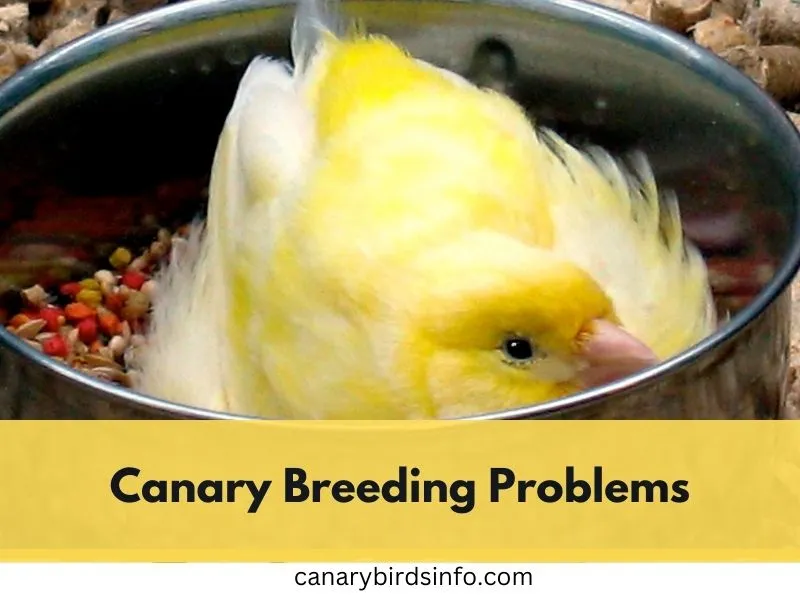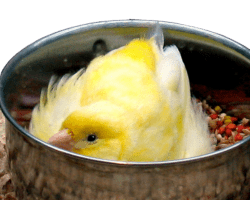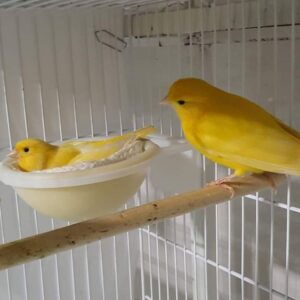Canary Breeding Problems
Welcome to our blog post on overcoming canary breeding problems! Whether you’re a seasoned breeder or just starting out, we understand that encountering challenges along the way is part of the journey. Breeding canaries may seem simple at first glance, but like any other living creature, these delicate birds come with their own set of unique issues and obstacles.
In this comprehensive guide, we will delve into the common canary breeding problems faced by canary breeders and provide you with practical solutions to ensure your success. From creating the ideal breeding environment to addressing behavioral challenges and managing fertility issues, we’ve got you covered every step of the way.
So grab a cup of tea (or birdseed!) and join us as we embark on this exciting adventure in canary breeding. By implementing these tried-and-tested strategies, you’ll be well-equipped to overcome any hurdles that come your way and experience the joy of successfully raising healthy and vibrant canaries. Let’s dive in!
Understanding Canary Breeding Problems
Breeding canaries may seem like a straightforward process, but many breeders encounter challenges along the way. Understanding canary breeding problems is crucial for successful breeding and ensuring healthy offspring.
Infertility
One common issue that breeders face is infertility. This can be caused by various factors such as improper nutrition, stress, or genetic abnormalities. It’s crucial to monitor mating behavior closely and observe if eggs are being laid consistently. Identifying the root cause of infertility is essential in addressing this problem effectively.
Egg Binding

It’s important to provide a suitable nest box with soft materials and ensure the hen receives adequate calcium through diet or supplements. Breeding pairs should be monitored closely to detect any signs of egg binding and seek veterinary assistance if necessary.
Inbreeding
Inbreeding is another concern among breeders that can lead to weakened immune systems and reduced fertility in offspring. Maintaining diverse bloodlines through careful selection of breeding pairs helps minimize the risk of genetic issues.
Molting
Molting during the breeding season can also disrupt the breeding process since it requires a lot of energy from birds. Providing adequate nutrition and minimizing stressors during this time is crucial for successful mating and egg production. Molting in breeding season can confront canary breeding problems.
Aggression Between Mates
Additionally, behavioral problems like aggression between mates or rejection of eggs are common obstacles faced by breeders. These issues require patience, observation, and sometimes intervention to ensure successful breeding outcomes.
Mortality
Mortality during incubation is another issue faced by breeders. Eggs failing to develop or chicks dying inside the shell could indicate temperature fluctuations, inadequate humidity levels, or bacterial infections. Maintaining proper incubation conditions and regularly sanitizing the equipment can help minimize these risks.
Chick Survival

By understanding these common breeding problems and taking proactive measures, breeders can increase their chances of success in raising healthy canaries. Stay tuned for our next blog section on overcoming these hurdles!
Overcoming Canary Breeding Problems: A Step-by-Step Approach
Creating the Ideal Breeding Environment
- Creating the ideal breeding environment is crucial for overcoming canary breeding problems and ensuring successful reproduction. Start by providing a spacious and comfortable cage or aviary that allows your canaries to move freely and engage in natural behaviors. Ensure proper ventilation to maintain optimal air quality.
- Next, consider the temperature and lighting in their environment. Canaries thrive in moderate temperatures between 65-75 degrees Fahrenheit. Keep them away from drafts or extreme heat sources. Additionally, provide them with 12-14 hours of light per day to simulate natural daylight cycles
- To encourage nesting behavior, add suitable nesting materials such as coconut fibers or soft grasses. Place nest boxes strategically at different heights within the cage or aviary to accommodate multiple pairs.
- Nesting Materials
Nesting materials are essential for creating a suitable breeding environment. Offer a variety of options such as soft grasses, coconut fibers, and cotton nesting material. This gives the female canary choices when building her nest. - Proper hygiene is essential for a healthy breeding environment. Regularly clean the cage or aviary, removing any droppings or debris that could harbor bacteria and cause health issues for your birds.
- Maintaining cleanliness is vital in preventing diseases and promoting fertility. Regularly clean the cage or aviary by removing droppings and replacing soiled bedding materials.
- To encourage bonding between partners, place compatible male and female canaries together in separate cages next to each other before introducing them for mating purposes.
- Ensure privacy during mating and egg-laying periods by minimizing disturbances around the breeding area. This will help reduce stress levels and increase the chances of successful breeding.
- Minimize stress factors that may disrupt breeding success. Limit loud noises or disturbances near their habitat to create a calm atmosphere conducive to successful reproduction.
By creating an ideal breeding environment, you are setting the stage for successful canary reproduction while minimizing potential problems along the way.
Nutrition and Health Considerations for Successful Breeding
Proper nutrition and good health are key factors in ensuring successful breeding for canaries and avoiding common canary breeding problems. Providing a balanced diet is crucial for both male and female birds, as it directly impacts their reproductive capabilities. A well-rounded diet should include a variety of seeds, pellets, fruits, vegetables, and protein sources like cooked eggs or mealworms.
To enhance fertility and egg production, it is important to supplement their diet with calcium-rich foods such as cuttlebone or crushed oyster shells. These minerals help strengthen the eggshells and reduce the risk of brittle eggs or complications during hatching.
In addition to a nutritious diet, maintaining optimal health is essential for canary breeding success. Regular vet check-ups are recommended to detect any underlying health issues that could affect reproduction. Parasite control measures should also be implemented to prevent infestations that may weaken the birds’ immune systems.
Providing a clean environment is vital too. Regularly cleaning cages or aviaries helps minimize exposure to harmful bacteria and reduces stress on the breeding pair.
Taking care of your canaries’ nutritional needs and ensuring they are in good health will greatly increase their chances of successful breeding outcomes!
Tackling Behavioral Challenges in Canary Breeding Problems
When it comes to breeding canaries, behavioral challenges can often arise. These challenges may present themselves in various ways, such as aggression between mates or the female abandoning her nest. However, with a little patience and understanding, these issues can be addressed effectively.
One common behavioral challenge is aggression between mating pairs. This can occur when the male becomes overly territorial or aggressive towards the female. To tackle this issue, it is important to provide enough space for both birds to establish their territory without feeling threatened by each other. Also, ensuring that there are plenty of perches and hiding spots within the cage will help alleviate any potential conflicts.
Another behavioral challenge is when the female abandons her nest before completing incubation. This can be disheartening for breeders who have invested time and effort into creating an ideal breeding environment. To address this issue, it is crucial to evaluate whether there are any external factors causing stress for the female bird.
It could be anything from noise disturbances to inadequate lighting conditions. Identifying and eliminating these stressors will greatly increase the chances of successful incubation.
Most of the time, a female canary leaves her nest before completing incubation due to another male. A male next to her nest or in the room sings too aggressively to attract a female, which could cause this situation.
In order to prevent such problems, avoid keeping a single male canary in the breeding room. However, you can keep the pairs in the same room.
Canary Breeding Problems: As a canary bird expert, I have noticed these canary breeding problems in my entire journey. These were the main canary breeding problems and their solutions. Hope that you will have a better understanding now to tackle these canary breeding issues.
However, if you have any questions regarding canary breeding problems, please feel free to contact us.



